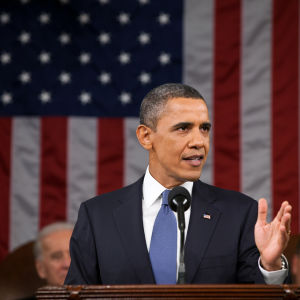Former President Barack Obama championed worker protections during his time in office, but critics have long since contested his administration overstepped its limits to accomplish that agenda.
Federal labor law has taken on many interpretations over the decades because of how complex and expansive it is. The courts and federal agencies have numerous interpretations for different labor policies and those views often shift depending on who is president. Nevertheless, those interpretations are bound by the limits established in the law itself.
The Obama administration pursued policy changes related to union elections, contracting, and worker safety, among others. His agenda represented a huge leap forward for progressives causes which often focus on worker issues – but critics have fought back, arguing he overstepped the intent of the law.
“Congress is the only one who has the authority to pass laws and statutes,” National Restaurant Association Senior Vice President Angelo Amador told InsideSources. “These agencies are supposed to interpret and clarify, but that is very different than changing. They did some sweeping changes without any legal, or at least stretching the legal interpretation which led to a great deal of litigation which is leading to a lot of these rules being found illegal or just being withdrawn.”
The business community and others have filed lawsuits with the intent reversing those reforms. They have also released research and launched informational campaigns to prove why the reforms were bad ideas, to begin with. Critics have argued the reforms imposed huge burdens on employers while doing little good for workers.
Economic Policy Institute Associate Labor Counsel Marni von Wilpert counters that business interests have slowly reworked the laws over the years to serve themselves––instead of the workers the laws were originally meant to protect. She argues that the Obama administration was helping to restore the original purpose behind the laws.
“Employers over time have been able to reconfigure our basic employment relationships so that workers are further away from their actual employers,” Wilpert said. “We have basic workplace safety laws that hold employers accountable, but since we re-jigged our economy so that the workers are further away from their employers, it’s very hard to enforce these laws. That was a lot of what the Obama administration was trying to do with its joint-employer standard.”
The Obama administration tackled contracting issues in a few critical ways. It expanded the joint-employer standard which determines when an employer is legally responsible for the employees of a company it contracts with. It also sought to redefine independent contracting, a necessary change with so many workers turning towards contracting work like the sharing-economy.
Wilpert argues that some employers have used the contracting relationship to avoid their responsibilities to those who should be considered their employees. She notes employers use contracting to create a degree of separation between them and the people working for them. Where a person goes to work every day might not be where they are employed–like a company contracting with a cleaning service.
The Obama-era reforms were intended to protect those workers by potentially making both employers legally responsible for that employee. They also dealt with new markets that have relied on contracting, like the sharing-economy. An Uber driver isn’t technically an employee but rather an independent contractor.
President Donald Trump has taken a much different approach to helping workers. His administration has already started to roll back reforms implemented during the last administration. Amador believes those recent actions will help restore the original and correct interpretation of these policies.
“I think we’ll go back to the traditional standard in a lot of these cases,” Amador said. “These ideas that the Obama administration tried to push forward–hopefully, those are gone. There was one on overtime where they tried to implement automatic increases without action from Congress. I think that’s gone. The same thing with others.”
Wilpert counters that the system before Obama was no longer serving the interests of workers like it was intended to do. She argues that the last administration didn’t overstep legal limits, but rather restored the purpose behind the laws – to protect workers and not business interests.
“I would say the agreed-upon standard before Obama has worked only for employers for decades,” Wilpert said. “It really hasn’t worked for employees at all–the franchising issues for example.”
Franchise businesses became a central focus during the last administration because they were particularly prone to the updated joint-employer standard. The business model relies on large brand names contracting with many smaller and independently-owned businesses.

